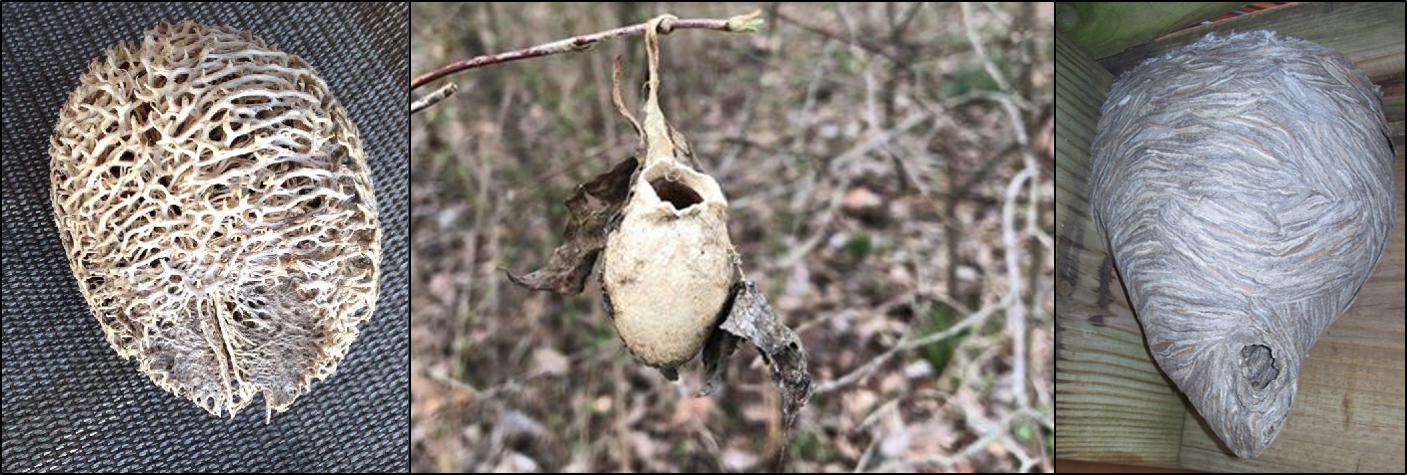 Photo ©
L-R: Colleen Keays, Carla Weiss Burnetta, Steve DeGeest
Photo ©
L-R: Colleen Keays, Carla Weiss Burnetta, Steve DeGeest
by Robyn Bailey, NestWatch Project Leader
It’s that time of year when NestWatch starts to get numerous daily questions about nesting birds. Most of the time, we can help out and identify the mystery nest so NestWatchers can start monitoring them. Occasionally, though, we get a stumper question, and it turns out to be something other than a bird’s nest. Here’s a collection of my five favorite “nest” queries we’ve received from participants.
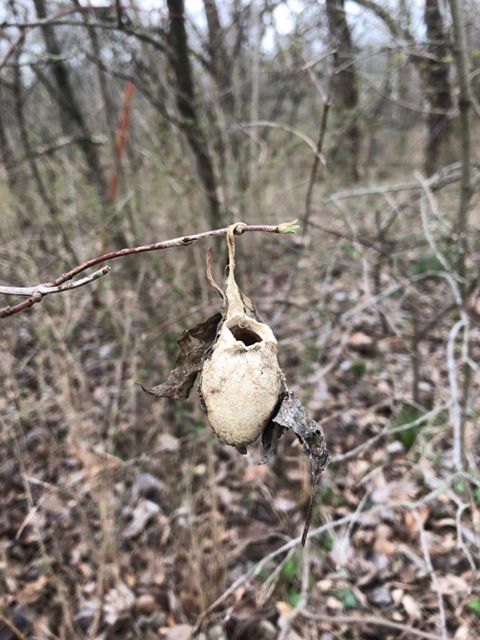
No Birds In Here
Is it an undersized oriole nest? Or a seed pod? No, it's a silk moth cocoon, probably made by a polyphemus moth.
Looks Just Like an Oriole Nest!
Carla Burnetta sent us this photo from Kansas, along with the note that it was one to two inches long. We were amazed by its stunning resemblance to a Baltimore Oriole nest, but the dimensions were much too small. Our staff had no clue what it was. After further searching, Carla discovered it may be the cocoon of a silk moth (perhaps Antheraea polyphemus). We asked around, and our colleagues agree. It turns out that these moths also imitate birds in other ways: moths in this family often have large “eyespots” on their wings, which are thought to look like owl eyes (thereby scaring predators).
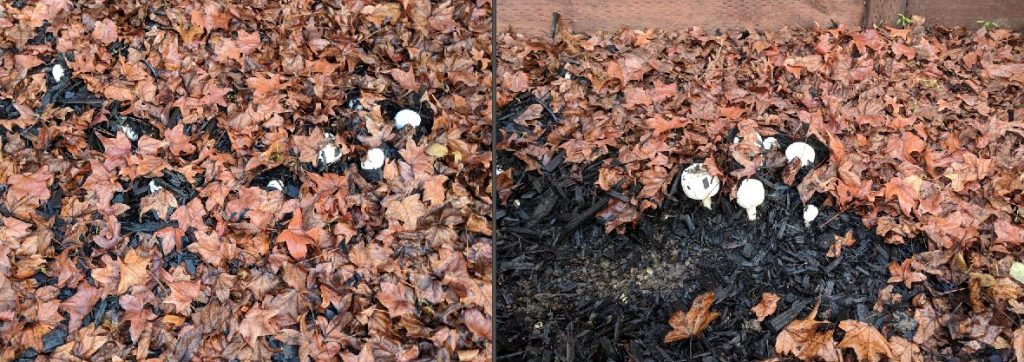
On Closer Inspection
This nest of eggs hidden in the leaf litter turned out to be fungal in nature.
Mycological Mystery
Ishwarya Thirunarayanan of California submitted this photo of what looked like eight or nine eggs nestled in the dry leaves, but what species could it be? Was it a Wild Turkey or a Mallard nest scratched into the leaves? Not wanting to disturb the “eggs,” Ishwarya didn’t approach too closely for fear of leading predators to the nest. However, the next day, the wind had blown some leaves away, revealing a cluster of mushrooms growing in the yard after some rainy days. Ishwarya exercised excellent caution, and it’s always better to be safe than sorry when it comes to bird’s eggs. Ishwarya and I shared a chuckle, and the mushrooms were left to their own devices.
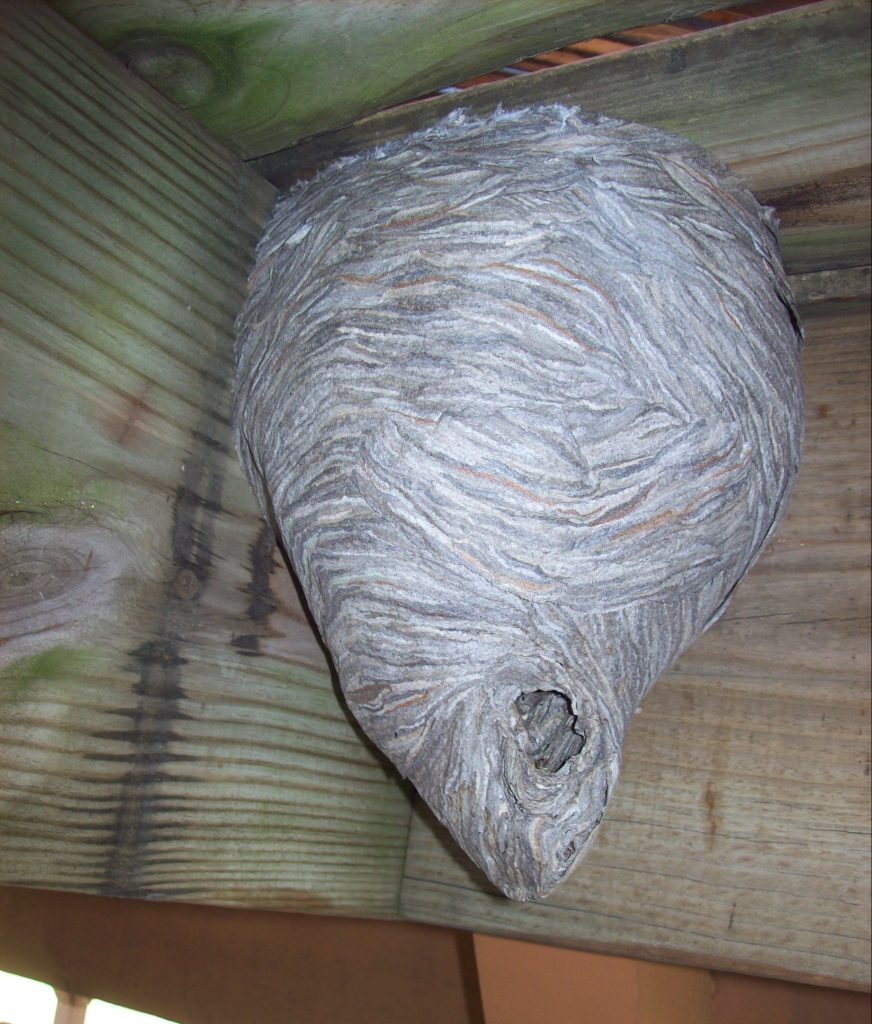
Do Not Disturb
Danger! This is no bird’s nest. You don’t want to NestWatch it.
Danger Dome On Deck
This nest was submitted by Steve DeGeest of Minnesota. I suspected it was an insect nest, but I wasn’t certain what kind of wasp had made it. Fortunately, the community of NestWatchers identified it as a baldfaced hornet’s nest, the largest and most aggressive of the wasps. I also learned that it’s worth about $100 on eBay. (Note: it’s illegal to sell actual bird’s nests on eBay, or anywhere else). NestWatchers wisely warned Steve not to handle it until the colony was inactive. Interestingly, some birds do use the paper on these structures to camouflage the outside of their own nests, and perhaps project an element of danger to any passing would-be predators.
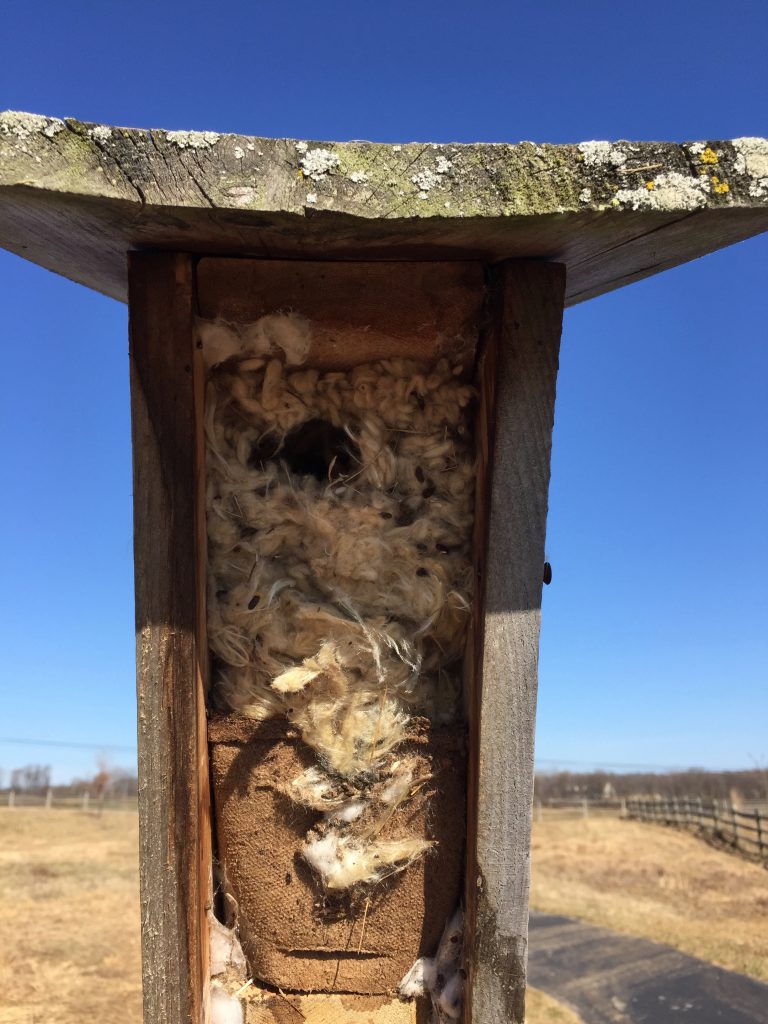
A Humble Abode
Mice often use nest boxes in winter and can somehow get around predator baffles. Look for a completely filled box, a side entrance, and telltale droppings.
A Mouse’s House
Ann Kent of Pennsylvania submitted this photo of some questionable nest box contents. What kind of nest appears in the winter, and on a baffled pole? Luckily, I’ve emptied enough nest boxes to identify it as a mouse’s nest. Mice often use soft, fluffy material to create a domed-over nest with a side entrance. There may or may not be a bird’s nest incorporated into the base of it (depending on whether the box was cleaned before winter). After some time, mouse nests have a detectable urine odor which is another clue that your mystery nest belongs to a rodent. Use caution when cleaning out these nests, as mice can carry viruses that are harmful to people—use gloves and a face mask when removing the material.
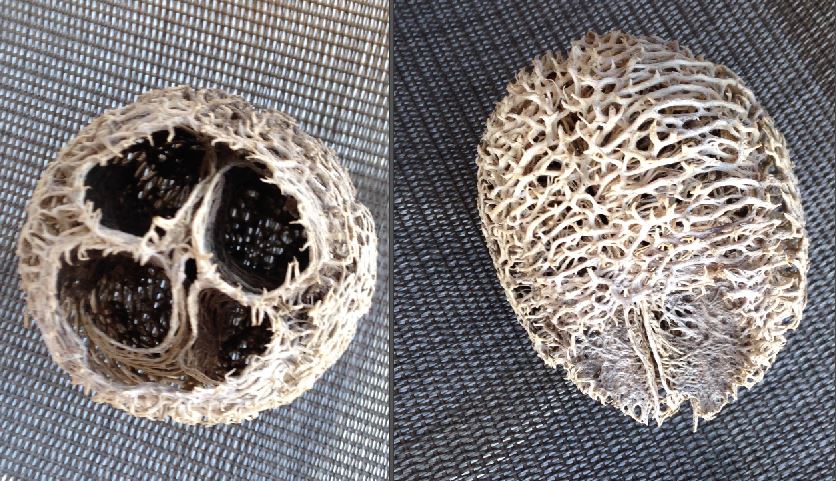
What's This?
Did a bird create this intricate structure? No, it's just a wild cucumber seed pod doing its thing.
Food For Thought
This intricate-looking “nest,” found by Colleen Keays while camping in California, is probably my favorite because I truly thought it was a bath sponge left by an exfoliating-minded camper. If you also thought it looks like a loofah, you wouldn’t be far off. Another NestWatcher put a name to the mystery item: a wild cucumber seed pod. In fact, bath loofahs are made from the dry pods of another member of the cucumber family. In California, Marah macrocarpa is one native variety common in chaparral areas. But this is one cucumber you won’t want to eat—it’s covered in spines and the fruit tastes bitter.
Inquiring Minds Want to Know
I often find things in nature that I can’t identify or explain; it’s part of the fun of being outside. At NestWatch, we encourage curiosity, and we’d rather you ask first, before picking up or potentially harming a nest by removing it from its location (or getting stung by a wasp). There is no question too silly; in fact, our staff learns from your questions as we try to research the answers, and other NestWatchers benefit too. Keep ‘em coming, and as always, we invite you to monitor any (bird) nest you find for NestWatch!
I Really Enjoyed Reading About These Nests That Weren’t, Ever So Good…..Thank You For Sharing.
In 1977 we were living in the Blue Mountains in Oregon. Paper wasps built a nest on our kitchen window that looks just like the one in this picture that was identified as a bald faced hornets’ nest. We used to sit at the table and watch the wasps care for their young, fan the nest when it was hot, and maintain all the little cells. These wasps were not at all aggressive. We walked back and forth by their nest all summer without them seeming to notice us. When they left, we took the nest down and kept it as a curiosity for a while.
Two years ago we had Oak Titmice raise a clutch in our Western Bluebird nest box. The next year in late winter I scrubbed out the nest box and waited to see what would use the box that year. I checked from time to time and never found any nest material or eggs. Late in that season I opened the nest box and found a gigantic empty wasp nest on the bottom of the box. I had never thought to look on the ceiling. I again cleaned out the box and this year followed a suggestion I had found to rub some ivory soap on the ceiling to prevent wasp activity. Several weeks later I opened the box to check and 8 or ten wasps swarmed out. I then cleaned it out and melted some paraffin on the ceiling and there has been no more wasp activity, but neither has there been any bird activity. If anyone has any ideas, please let me know.
I had a baldfaced hornet nest that we identified as different from a paper wasp nest as it grew amazingly fast, doubling in size in less that a day. And yes very aggressive!
I only know that that was a hornet nest because Ive seen one before. the other ones fooled me!